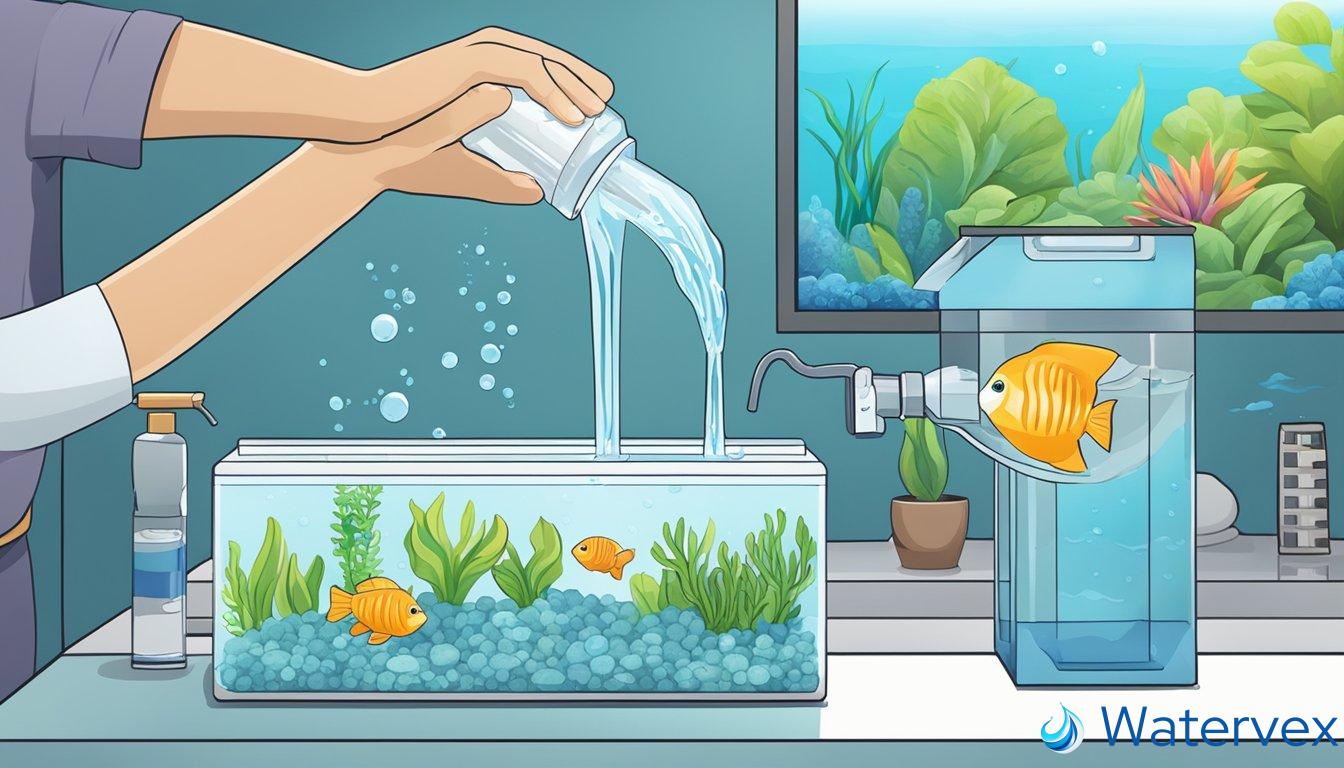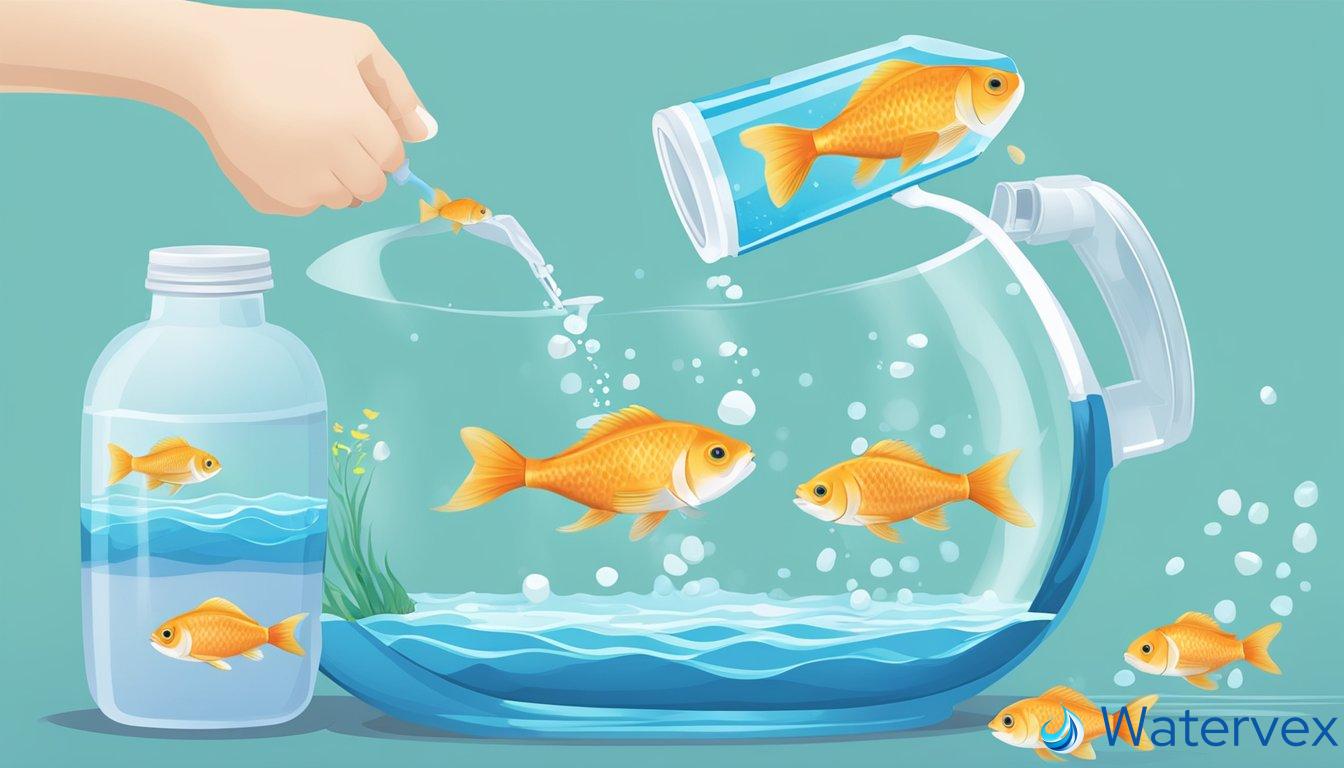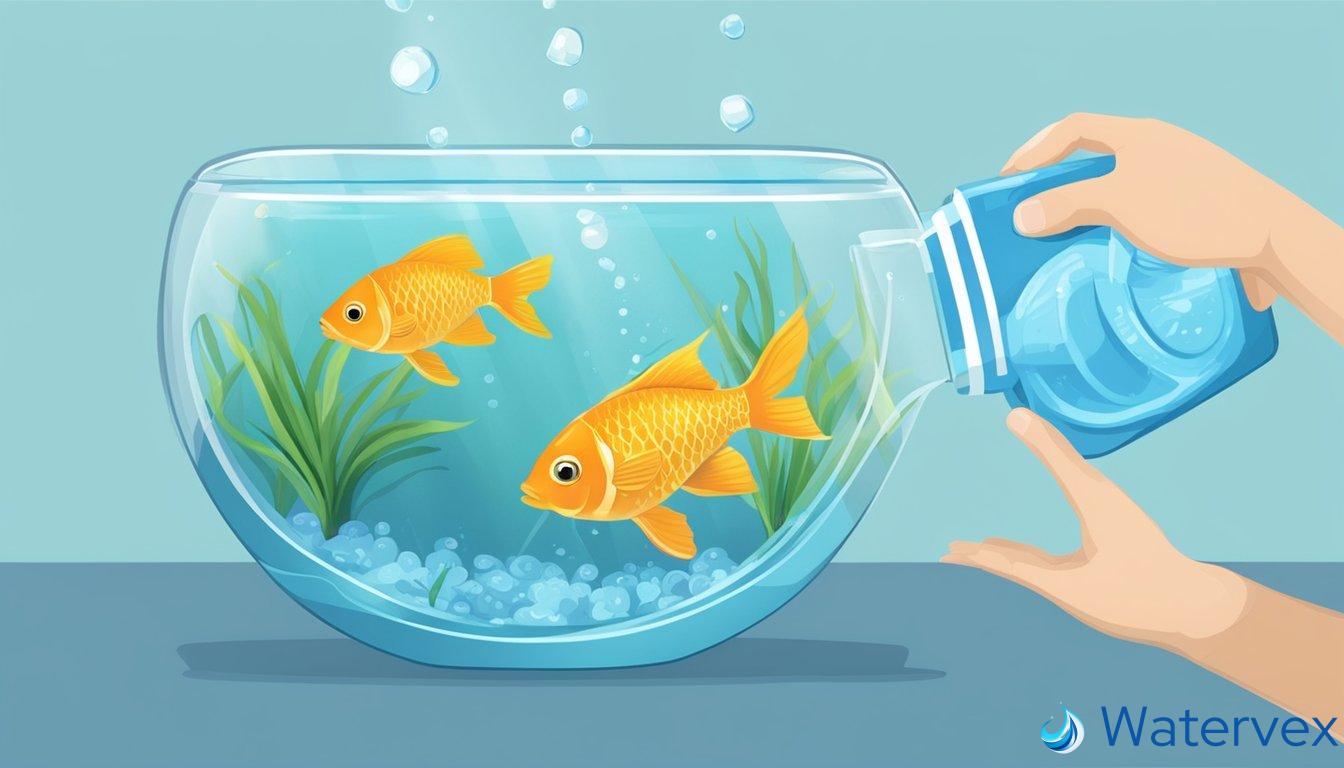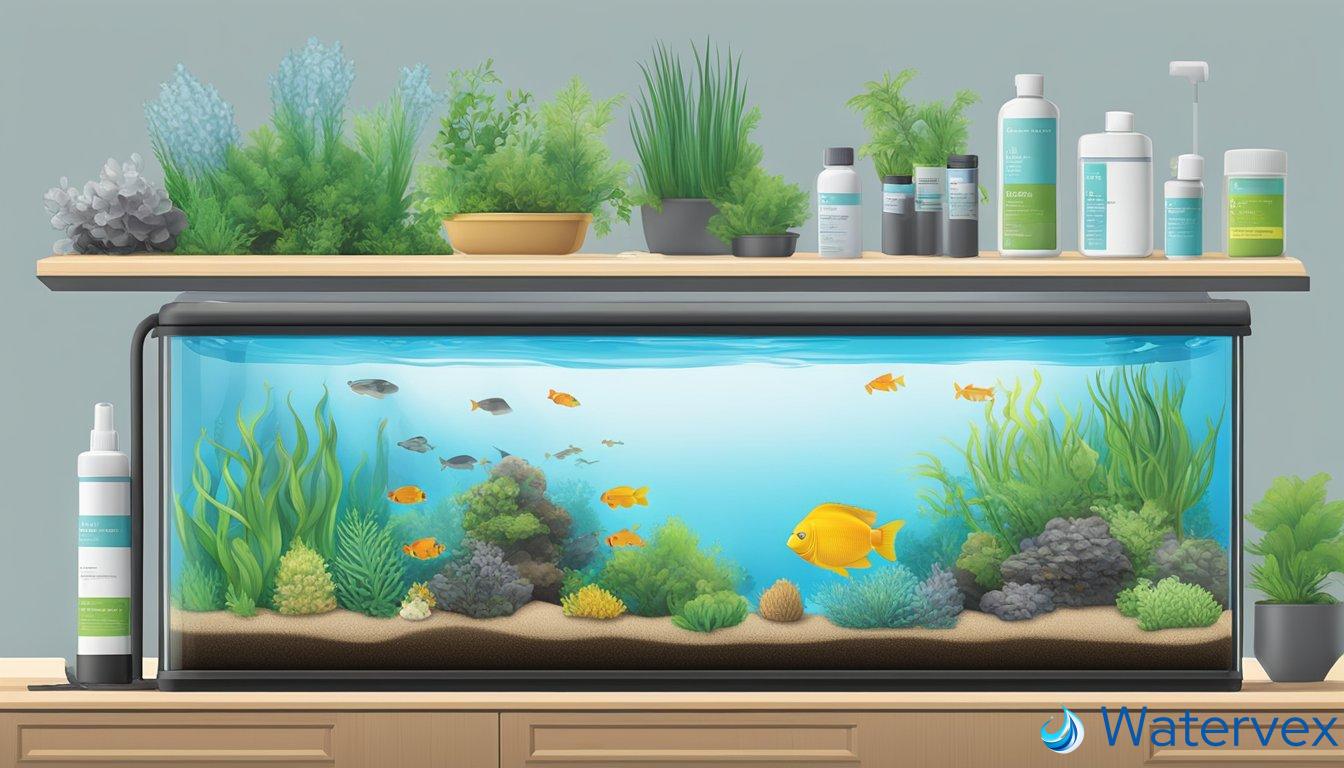Maintaining the right water quality in your aquarium is crucial for the health of your fish. Water conditioners play an essential role in this process, neutralizing harmful chemicals like chlorine and chloramine found in most tap water. The frequency of using a water conditioner depends on several factors, including the size of your aquarium, the number of fish, and the type of water you use for changes.

When you add new water to your aquarium, it’s always necessary to treat it with a water conditioner. This is important not just during the initial setup, but also during regular maintenance like partial water changes, which are typically recommended every two weeks. However, the specific dosage and frequency might vary based on the water conditioner brand and the volume of water being treated. Always follow the manufacturer’s instructions, and keep an eye on your water parameters with regular testing to ensure a safe and healthy environment for your aquatic pets.
Key Takeaways
- Use water conditioner with each addition of new tap water to the aquarium.
- Follow precise dosage recommended by the water conditioner’s manufacturer.
- Regular water testing is crucial to monitor aquarium water quality.
Water Conditioning Essentials
When it comes to maintaining your fish tank, understanding the frequency of using water conditioners is crucial. If you’re using tap water, it’s laced with chlorine and chloramine to make it safe for human consumption. These chemicals, although beneficial for us, can be harmful to your aquatic friends. Heavy metals often found in tap water aren’t exactly fish-friendly either.
Water conditioners work to neutralize these substances, thus making the water safe for your fish. In particular, products like Seachem Prime not only detoxify harmful chemicals but also help to maintain an optimal pH level and promote the growth of beneficial bacteria.
- Frequency of Use:
- During initial tank setup
- After cleaning the tank or changing water
- When adding new fish to your aquarium
| Condition | Frequency |
|---|---|
| New Water | Every time |
| Routine Change | According to the product instructions |
| Detected Contaminants | As needed |
Consider this your water conditioner schedule. If you’ve got a new setup, you’re going to use it for all new water added. During regular care, follow the label’s guidelines – typically a set amount per gallon of water. Should you find contaminants or after introducing new fish, a dose of conditioner is your go-to move to ensure your aquatic habitat stays stable and safe.
Remember, each product might have its own strengths. Some are specifically formulated to target chloramine, while others excel at removing heavy metals. Always check the label and understand which chemicals you’re dealing with in your water. And most importantly, don’t overload—while conditioners are beneficial, too much can disrupt the environment your beneficial bacteria call home.
Recognizing When Your Aquarium Needs Water Conditioning

Maintaining optimal water quality is crucial for the health of your aquarium inhabitants. Regular monitoring and understanding the signs for when to recondition your water can help prevent fish stress and toxicity build-up.
Triggers for Reconditioning Aquarium Water
- Change in Water Parameters: Evaluate your water parameters regularly. If tests indicate a rise in ammonia, nitrates, or nitrites, it’s time to consider water conditioning. These compounds can be toxic to fish, affecting their gills and overall health.
- New Water Addition: After adding fresh tap water due to evaporation or a water change, reconditioning is necessary. Freshwater and saltwater aquariums are susceptible to harmful chemicals like chlorine commonly found in tap water.
Immediate Signs of Water Conditioning Needs
- Visual Changes: Watch for unexpected algae growth or water cloudiness, which can signal a decline in water quality.
- Behavioral Changes in Fish: If fish exhibit signs of stress, such as gasping at the water’s surface or excessive mucus production, the aquarium might require immediate water conditioning to remove harmful chemicals.
By staying vigilant and knowing these specific triggers and signs, you can ensure a safe and healthy environment for your aquarium life.
Choosing the Right Water Conditioner

When selecting a water conditioner for your aquarium, it’s crucial to match the product with your specific needs. Whether you have a saltwater or freshwater aquarium, the types of water conditioners available will vary significantly.
For a freshwater setup, products like AquaSafe or Tetra AquaSafe Plus are popular. They neutralize chloramines and chlorines, critical for protecting your aquatic life. On the other hand, saltwater aquariums may require conditioners that also address the delicate balance of salts and minerals.
Seachem Prime is a versatile water conditioner that works for both aquarium types, effectively removing chloramine and detoxifying ammonia. Similarly, Fluval Water Conditioner offers a full-spectrum approach, treating tap water to make it safe for your tank inhabitants.
- Dechlorinators are a must; they ensure harmful chlorine is eliminated.
- Chloramine Neutralizers transform chloramine into non-toxic elements.
- Dosage is pivotal; always follow the instructions to the letter, as overdosing can create new problems.
Ensure you find a conditioner that provides the appropriate solution based on the volume of your aquarium. Dosage recommendations usually come on the bottle, but if in doubt, less is often more until you can test the water.
Boldly choosing the right conditioner means your aquatic friends will thrive in a balanced environment that resembles their natural habitat. Keep in mind water conditioners aren’t a one-time solution; usage depends on factors like water source quality and frequency of water changes. Always test your water periodically to determine if additional conditioning is necessary.
Proper Use and Maintenance

Ensuring optimal water quality for your aquatic pets requires attention to proper dosage and frequency of water conditioner use, as well as exploring alternatives for maintaining a safe and healthy environment.
Dosage and Frequency
For optimal water quality, it’s essential to understand the appropriate dosage of aquarium water conditioner. Typically, manufacturers will suggest using a specific amount per gallon of water during your regular maintenance, which usually includes weekly water changes. It is crucial to follow these guidelines to avoid any potential overdose, which could be detrimental to your aquatic pets. Some conditioners are powerful detoxifiers, capable of handling not only chlorine but also heavy metals and chloramine.
Use a multi-test strip after applying the conditioner to ensure that it has effectively detoxified the water. If you’re topping off, the dosage may need to be adjusted since you’re not replacing a large volume of water. Using products like EDTA within the conditioner can help to further neutralize heavy metals. Regular maintenance, including proper filtration and monitoring, will aid in extending the effectiveness of your water conditioner, ensuring it is safe for fish.
Alternative Water Treating Methods
Beyond traditional conditioners, alternative water treatment methods can be employed, such as reverse osmosis systems or water from treatment plants that are already preconditioned. Reverse osmosis is effective in removing a wide array of contaminants, but it can strip beneficial minerals as well, necessitating remineralization before being safe for fish. Another alternative is electromagnetic water treatment or template-assisted crystallization, which alters the properties of scale-forming minerals, though these methods don’t replace the need for conditioners in addressing chlorine and chloramine. Always ensure that any method you choose maintains the essential water quality and safety for your aquatic pets.
